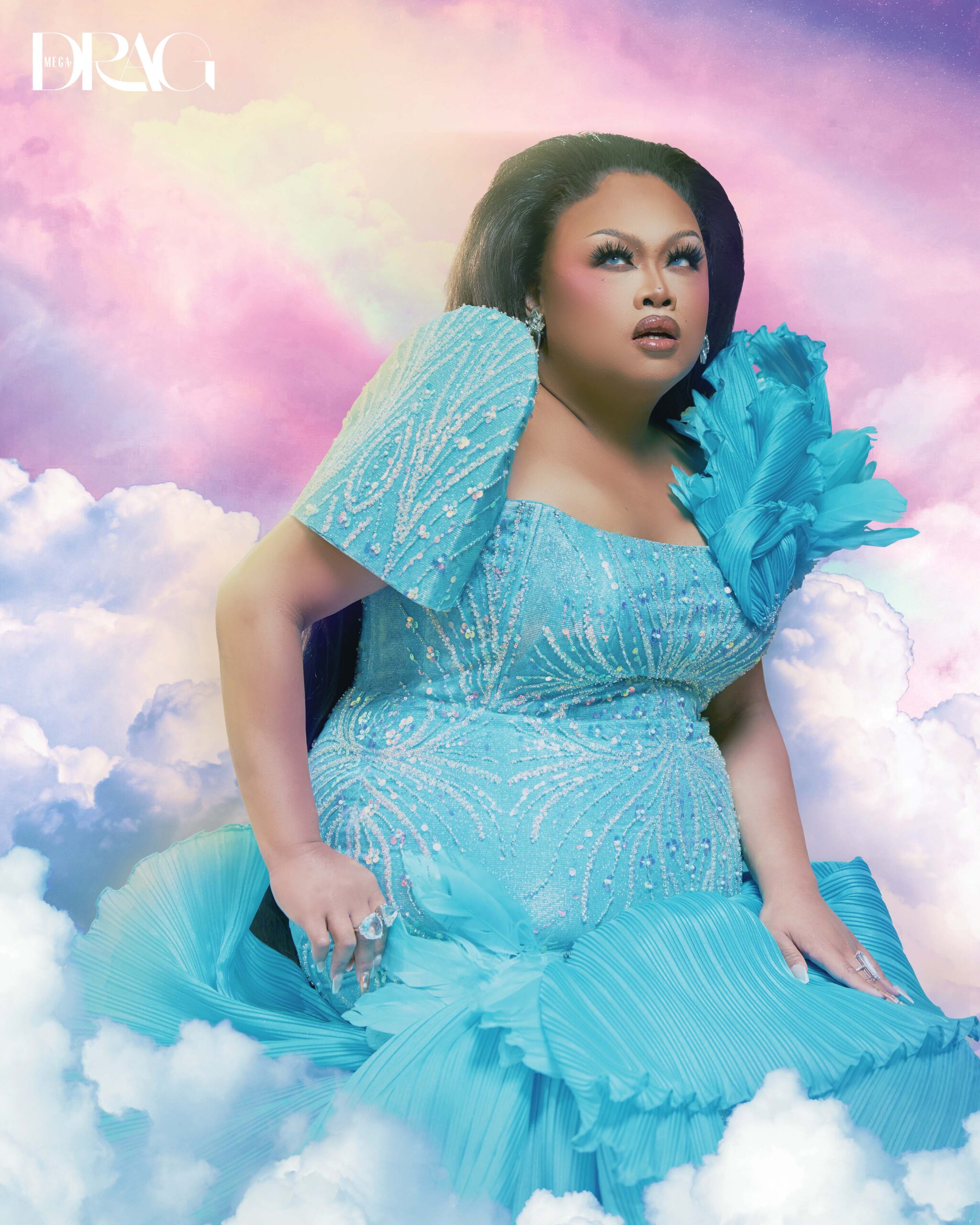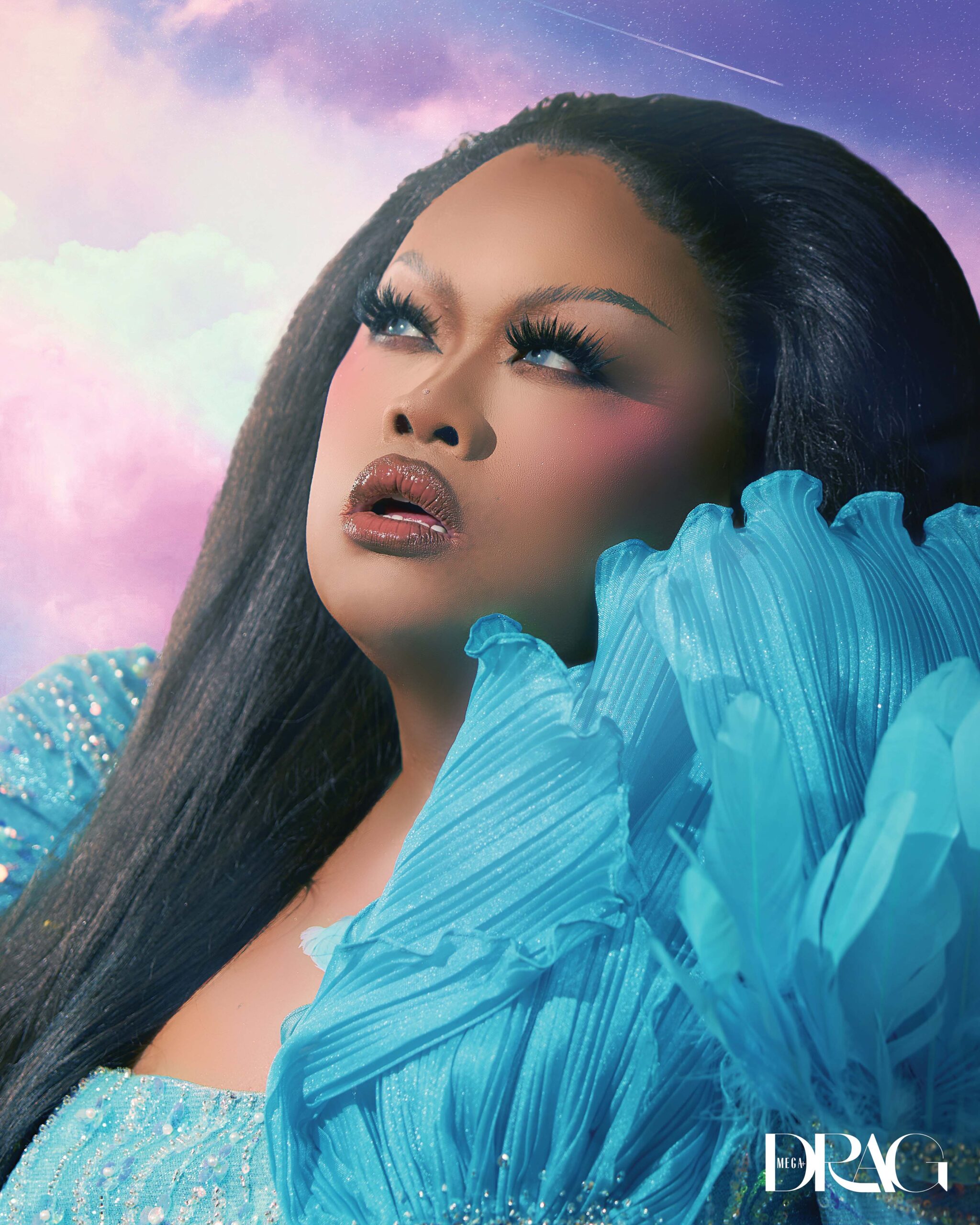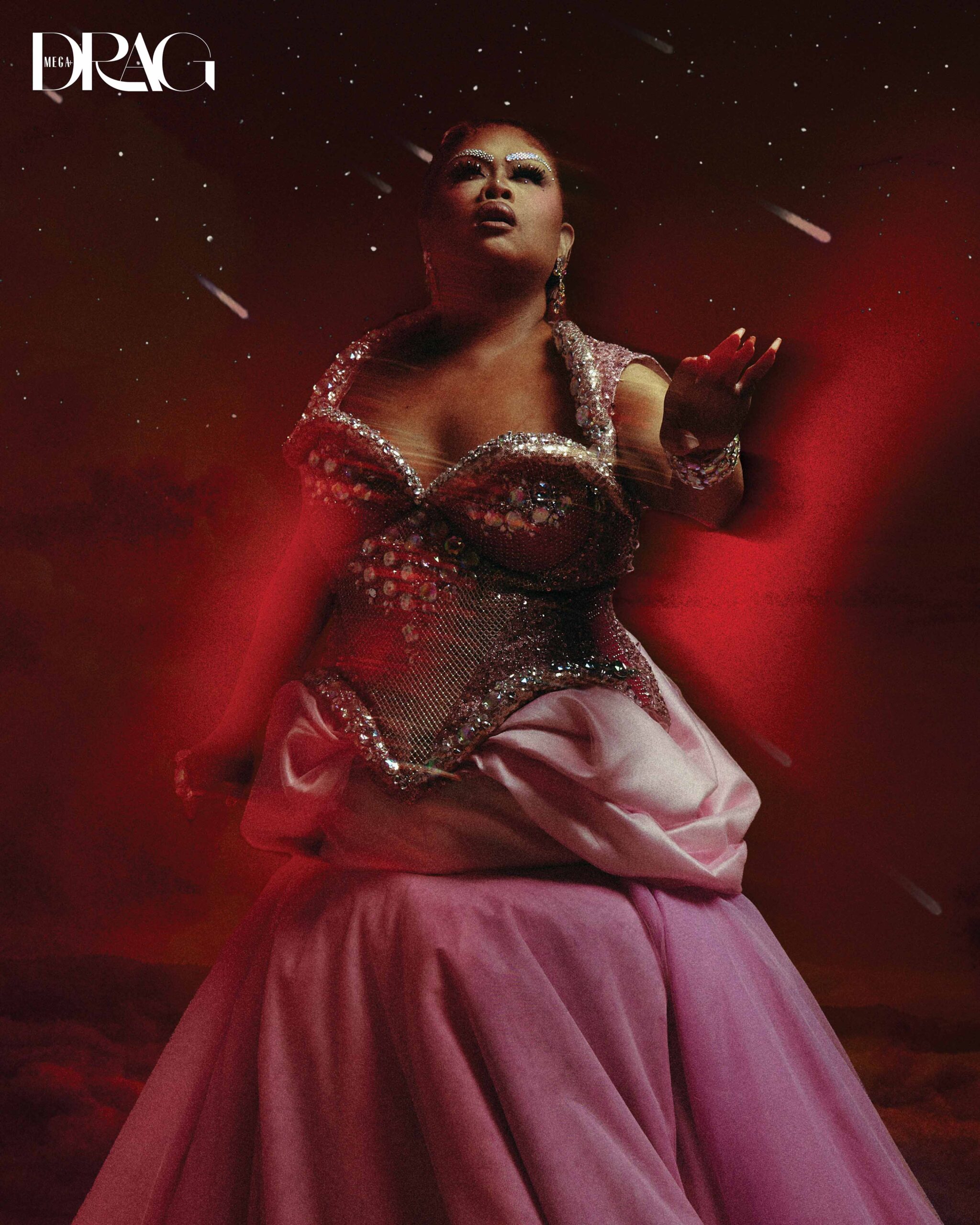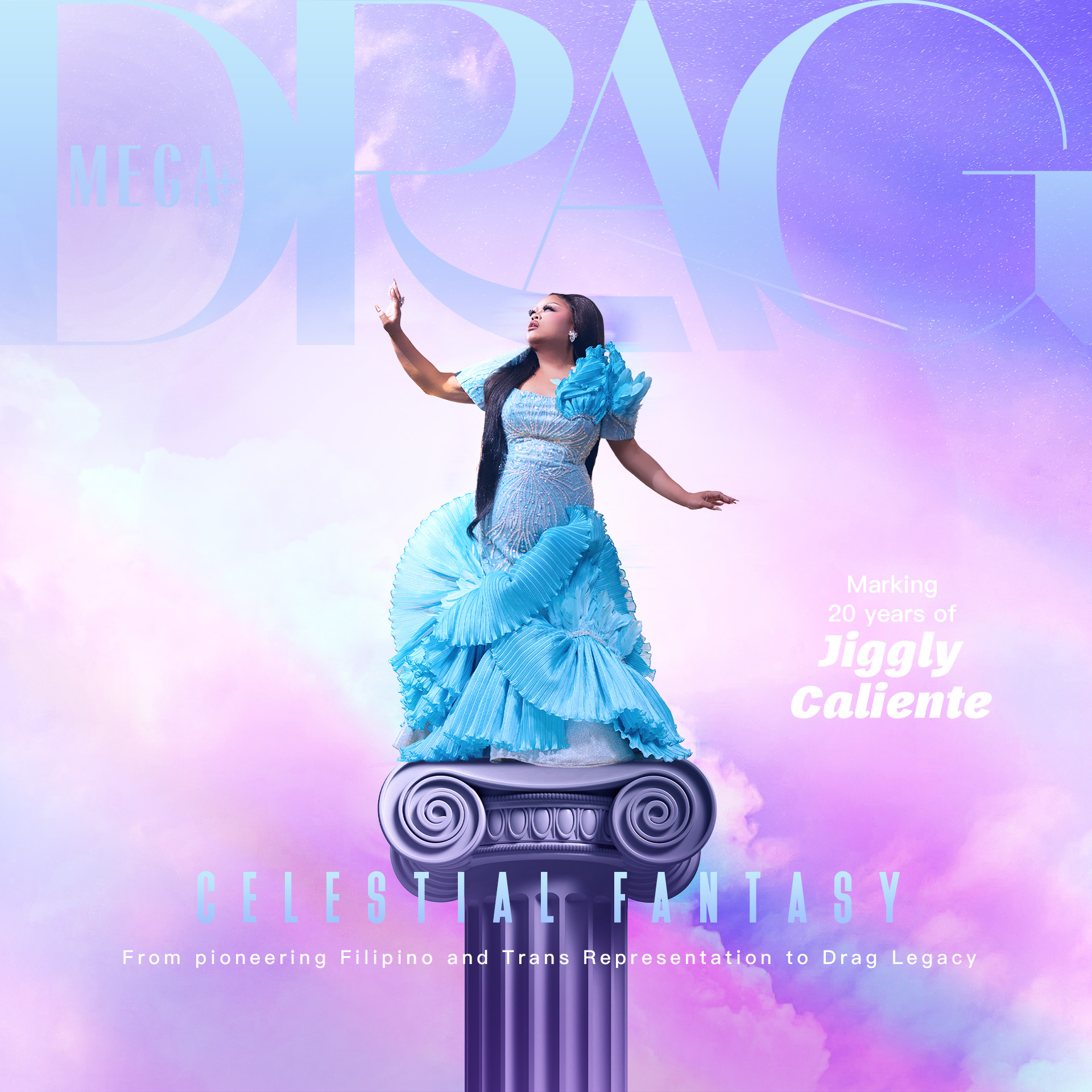Jiggly Caliente navigates her distinguished path and reflects on the crown jewel of her multifaceted drag career.
RELATED: Bek in Full Swing: Bekenemen Returns For Another Season
“I always told myself that when this is no longer fun, I will walk away,” declares the Ru Girl from Laguna. The successful onslaught of the severely vicious The Roast of Jiggly Caliente showed that her spirit remains as fun-filled as ever. Several girls from Drag Race Philippines took turns paying tribute to their ate wrapped in good-natured insults. “I am one of the queens of shade. As best as I can dish it, I can also take it,” she says about being the target of brutal jokes all night. According to the roastee, the top three unforgettable roasts came from Arizona Brandy, Hana Beshie, and Taylor Sheesh—the latter being the only girl outside Drag Race Philippines and someone with whom she’s shared some headline-making feud.
From creating one of the most iconic runway moments in Drag Race history to establishing a profound legacy within the local drag community as a judge in Drag Race Philippines and a cherished mother figure, Jiggly Caliente’s enormous imprint is undeniable. Inspired by her wildly messy post-apocalyptic look, we’ve envisioned a new perception symbolic of her journey packed with triumphs and self-discovery. Welcome to Jiggly’s utopia!
Little Jiggly

Like many queer kids, little Jiggly also invited the essence of Dyesebel into her play, turning blankets into mermaid tails and towels as hair. Like many trans kids, she always knew that something wasn’t right. “This isn’t me,” she remembers saying to herself. “Parang may mali and never was I happy.”
She came out to her mom three times. First, as bisexual, “para patago ng kaunti,” Caliente says. Some people feel it’s a more comfortable way to disclose their attraction to the same gender, softening the shock, in a way. “Tapos gay, then drag queen. When I was about 26 or 27, [I told my mother] ‘Ma, I think babae ako talaga.’ My mom understood that easier.”
One might wonder how Caliente developed a sharp tongue and such a feisty exterior. Many things can be traced back to childhood, and the self-proclaimed maldita was raised always to fight and defend herself. For instance, she got kicked out of school for sticking up for herself against a bully. Let’s just say a freshly sharpened pencil and the bully’s palm had a little meet-and-greet. “I never start a fight. I will finish it,” she asserts.
When you ask children what they want to be when they grow up, a drag queen isn’t exactly at the top of their minds—especially in the 80s. Little Jiggly wished to become a veterinarian. She chuckles at the thought and continues, “As I grew older, I wanted to become a comic book artist.” There was a time when her dream was to work for Marvel or DC, so she went to FIT (Fashion Institute of Technology) to study illustration. She felt discouraged when she realized that “comic books were kind of like a dying art form,” but those skills came in handy when her face turned into her canvas.
The Early Oughts
“Drag was the awakening for my transness,” says Jiggly Caliente, who experienced a turning point that led her to acknowledge her identity. Through drag, she discovered a deeper understanding of herself and carved a route to the blissful self-recognition as a woman.
Her journey into drag started 20 years ago when she went to The Web in New York to support a friend joining an amateur drag competition. “Ang daming chaka,” she blurts out. “Also, at that time, drag was different, and you could get away with wearing ready-to-wear.” The host caught wind of her megaphone mouth launching jeers and invited her to come next month to join.

She had a friend who worked at MAC do her makeup, which was “ganda-ganda lang, not even drag makeup.” She wore a red sweater and JNCO jeans and danced to Janet Jackson’s “Doesn’t Really Matter,” complete with choreography and the dance break from the music video. “The beginnings of my career were heavily based on Janet Jackson, Beyonce, and the Pussycat Dolls. Janet was always my icon.” She won, by the way.
Jiggly Caliente started entering many more competitions and pageants. That first win must have fired her up, igniting an insatiable hunger. During her peak as the new girl around 2007 or 2008, she dominated Barracuda’s Star Search, racking up wins for 32 weeks straight—a record for the most consecutive winning streak.
A Different Time
The drag scene back then was very different. “It was underground,” says Jiggly. “I always tell girls na they don’t realize how lucky they are that because of Drag Race, it gave life to this career. [Before], in any nightclub situation, drag queens were the first to go if the night was slow. And then the go-go boys, and then the bartenders. But now, we’re the ones that keep people in the bars.”
Having been immersed in the world of drag for decades, Caliente has seen how it evolved: from its beautiful rawness, more subversive, and untamed vibe to this ultra-glossy commercial powerhouse. “[Drag] has elevated,” she nervously laughs and realizes she’s about to repeat a similar statement that once caused an uproar for teasing another queen, “and there’s room for everybody. There’s room for everyone because art is subjective, and everybody likes a different form of art. Somewhere, somebody will see themselves in that art form.”
“I think drag has been an ever-changing and ever-growing industry. In the US, the most lucrative girls were the pageant girls or the girls who could host. Drag Race came and changed the game. I’m thankful that Drag Race has done that. When the economy went bad, all the drag shows were gone. And then somehow, some way, Drag Race happened, and then boom, it started to pick up. More drag queens have emerged, and even the art form itself has become more accepting and inclusive of different forms of drag.”
An integral part of any journey in the queer community is finding your chosen family. Jiggly Caliente found that sense of belonging and comfort with Sahara Davenport, who appeared on RuPaul’s Drag Race Season 2. When Sahara started dating Manila Luzon, she also became really close to fellow Filipina queen.
May-I-Call-You-Jiggly Era

Jiggly Caliente had zero intention of joining Drag Race. She wouldn’t have entered the reality show if it were the last thing on earth. Manila Luzon filled out her application for Drag Race because it was the furthest thing from Jiggly’s mind. Apparently, Manila got a call from casting asking if she knew any sassy, big girls. “Manila and Sahara were trying to convince me that I should step away from escorting and do Drag Race. I was like, ‘No, I’m good! I make more money than either one of you bitches. I’m cool,’” recalls Caliente.
Persistent friends never give up. They likely figured she’d be great for TV. Fast-forward to them helping their girl out to make an audition tape. Manila came up with a concept, and the only thing Jiggly wanted to do was shoot a clip at the Apple Store in New York, which had a glass elevator that reminded her of X-Men.
“Back then, we only had 8 days to get ready for the show,” reveals Caliente. “Everything I brought on Drag Race, I already had. So, it was like, whatever makes sense.”
Jiggly was early in her transition when she was on TV. She hid it from the producers even though they noticed and asked. “I wasn’t ready for it because I didn’t think the world was ready,” she says. “If people are gonna pass judgment on my transness or my womanness, I was absolutely not [going to risk it].”
A Milestone For Representation
Her appearance on the show as a brown-skinned queer person helped shape the perceptions, attitudes, and dreams of many Filipinos across the world. When diverse faces and stories are showcased, it shakes up stereotypes and opens up minds. Jiggly says: “I don’t ever think that I had influence even though I get a lot of messages from Filipinos and plus-size girls or trans girls that say I have somehow impacted their lives because they saw me on the show.”
The visibility of all the OG Filipino queens—Ongina, Manila, and Jiggly—on the platform that is Drag Race was instrumental in paving the way for the drag renaissance we’re experiencing here in the Philippines today. Different generations of queer Filipinos felt empowered and validated. We learned that embracing our true selves and expressions can unlock greatness, propelling our dreams and aspirations forward.
“I never take that for granted, nor do I let it get to me. It’s overwhelming but in a good way. I never saw anyone like me growing up, so, you know, to be one of the first trans-Filipinas cast on a Ryan Murphy show, despite the fact that I barely had any lines, it was an important milestone for representation.”
Jiggly returned to Drag Race 9 years after Season 4 for All Stars. “The level of drag that [the fans] expect has definitely, immensely changed,” she says. To paint the contrast, in her first season, she wore Hot Topic, which cost $27 when she walked in. For All Stars 6, she entered the Werq Room in a custom-made leather dress, a Versace cuff, YSL shoes, and Bulgari jewelry. For the promo, Caliente wore a gown that “gave a little bit of a nod or respect” to her Filipino heritage. She still can’t believe, up to this day, the amount of love she received back then because of a butterfly sleeve.
Forging A Legacy
Jiggly Caliente returned to the motherland as a Ru Girl in 2016 when she did her first homecoming show at O Bar. There, she met Precious Paula Nicole, DeeDee Marié Holliday, Captivating Katkat, Bernie, Brigiding, and many more, whom she all befriended and grew close to, especially after returning for a second show a couple of years later.
During the pandemic, many queens who found themselves out of work due to the lockdowns pivoted to online shows to survive. Because of the time difference, Jiggly would wake up very early to watch and support our local queens. She likens her friendship with Manila through the years that became her chosen family to now being with the Drag Race Philippines girls. “I wanna make sure that the hardships I faced being a Ru Girl and being a drag queen or a transwoman—I don’t want them to go through that,” Jiggly expresses her caring maternal instinct and then shifts to being catty in a blink of an eye, “I’m also the maldita ate that lets them know if I see you in Shein one more time…”

Presently, the one gig she cherishes most is her role as a judge on Drag Race Philippines. “I see myself in all the girls, not because I’m Filipino but because I was in their shoes.”
“I may be the sassy judge, but I would never say anything to any of the girls that would scar them or like hurt their feelings because your art is your baby—your drag is your baby. You’re putting yourself in a vulnerable position to be critiqued and judged. The last thing you want to hear is your outfit is trash.” She remembers her season when she heard something similar from a judge because it sticks with you. “When a judge says that, the whole fandom thinks it’s okay for them to say it.”
I watched our Drag Race Philippines girls slew Jiggly with a barrage of barbs, joke after joke, at the roast in honor of their beloved ate. For a moment, amidst the chaos and laughter, it made me think back to when she first appeared on our screens when the show wasn’t the giant it is today. Seeing someone who shared our background pushed forward many dreams and aspirations. Our queer community has evolved so much since then. Jiggly Caliente blazed a remarkable trail that others now parade upon it, showcasing the undeniable power of representation as a catalyst for social progress.
Photography SELA GONZALEZ. Creative Direction JUJIIN SAMONTE. Art Direction and Photo Manipulation ANDREW ENCAPAS. Styling ØV CÜNT. Beauty Direction MARA GO. Makeup Artist KENRIC CARPIO. Hair VERSEX. Shoot Coordination JOANA FERNANDO.







